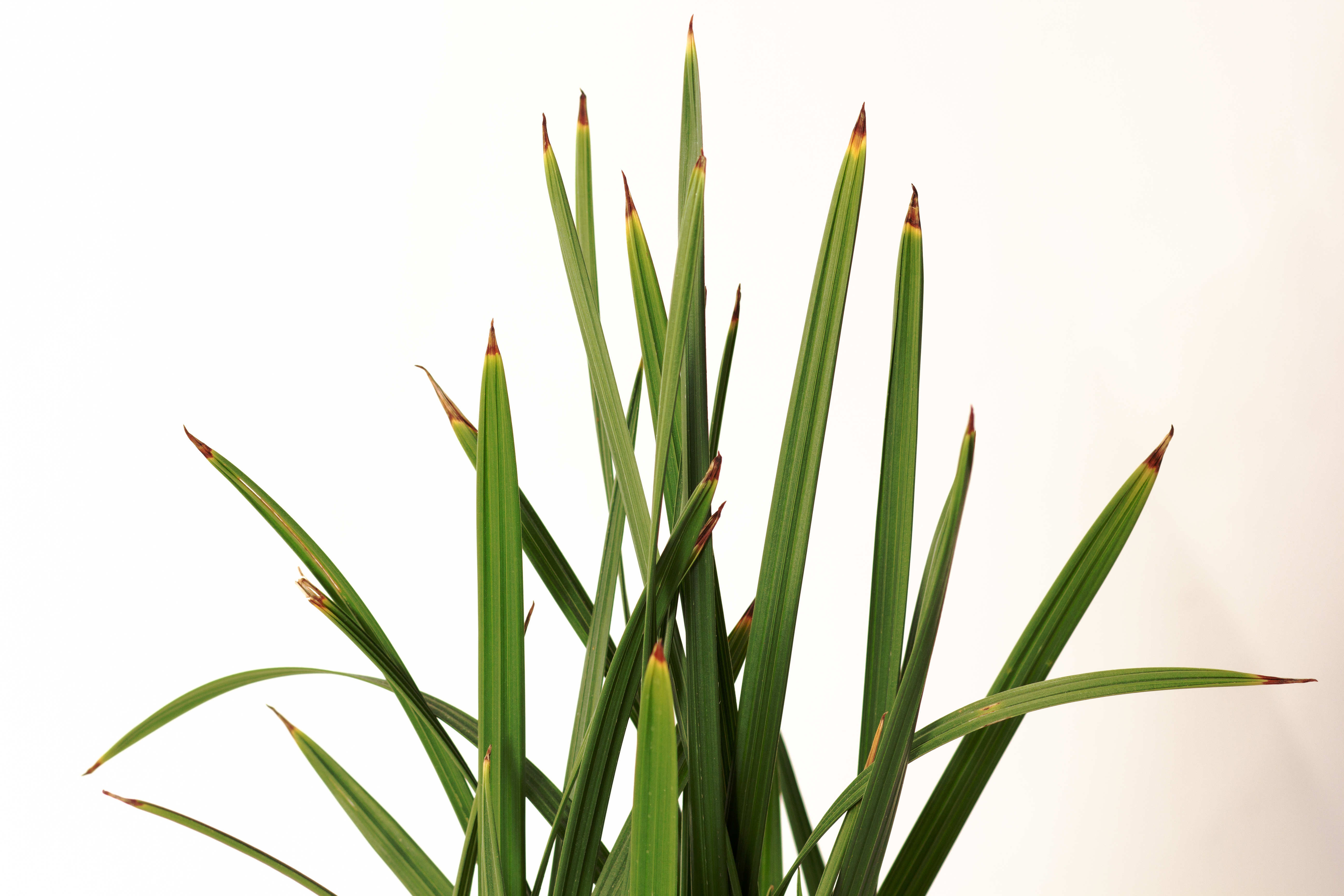Why is my plant getting brown leaf tips?
As a plant owner, you will definitely come across some brown leaf tips. Sometimes it's just an inevitable part of your plant's lifecycle. But there are a number of different reasons why your plant may show this symptom. Determining the cause can help you figure out if it needs to be treated and how to treat the problem.
Symptoms
Dry leaf tips
Shriveling
Drooping leaves
Common causes
Underwatered
Brown leaf tips can be a consequence of underwatering. Look out for additional symptoms of underwatering, such as drooping, the plant being pot bound or the soil being much too dry. Tend to your plant and repot it if needed. Try to make sure to follow Planta's care schedule.
Overwatered
Even if brown leaf tips often appear dry and shriveled, as you might associate with an underwatered plant, they can in fact be a sign of overwatering. In particular, if your plant lacks proper drainage, this may affect the soil's ability to take up water properly. Too much water can lead to your plant drowning. As a result, your plant's overall health diminishes - including the health of its leaves - and your plant may even die as a result.
Light issues
Somewhat confusingly, brown leaf tips can actually also be caused by both too much and too little light. Both issues can lead to other symptoms in your plant.
Overfertilized
Overfertilizing your plant may lead to brown tips appearing on the leaves. Some plants are more sensitive to fertilizer than others.
Poor airflow
Overly wet leaves , especially in combination with poor airflow, are not good for your plants. Some plants are more sensitive than others but a lot of water on your plants foliage is not good in the long run. This can cause bacteria build up and wilting leaves. If the temperature is low your plant will be extra sensitive.
Dry air or cold draft
Dry air and/or exposure to a cold draft are other potential causes of leaf tips starting to go brown. Once again, this is more likely to affect more sensitive plant types and is usually not too much of a concern for most common houseplants. However, if you have ruled out other potential causes and you know your plant likes warmth and humidity, then it can be worth bearing this in mind and, if necessary, moving your plant to a more suitable location.
Sensitivity to lime
Another sensitivity issue that can potentially result in brown leaf tips is when a plant is sensitive to lime. Lime is found in hard water. Hard water also typically contains high levels of other minerals and salts, too much of which could be damaging to your plant. Tap water is often hard, but the level of hardness varies depending on your location/ municipality – you should be able to research this online if you are curious about what type of tap water you have. It's important to note, though, that this likely won’t be a problem for you unless you own many especially delicate plant varieties. Most plants do just fine being watered with tap water.
Variegated leaves
Variegated leaves are simply more sensitive to browning than others, and so might not always be a cause for alarm. For instance, variegated leaves (those which have more than one color) are much more sensitive to damage due to lacking chlorophyll, typically along lighter-colored zones, and so it is quite common for light parts of leaves to become brown. If the problem continues for a prolonged time or spreads to all the leaves, you may want to check on your plant to make sure there isn’t a more complex problem.

What to think about
It's important to make sure you don't overwater your plant. Ensure your plant pots have drainage holes in them so that excess water can escape, and if you're unsure, it's safer to err on the side of underwatering than overwatering.
If you suspect lighting is the cause, then it's important to try and remedy the lighting as soon as possible. You can use the Planta Light Meter to check if your plant's current location is suitable for its needs and, if necessary, move it to a darker or brighter location.
Make sure to check that you're diluting your liquid fertilizer enough while also ensuring that the type of fertilizer you're using is suitable for the specific plant. Not all plants can tolerate the same fertilizer types.
Consider using a different method for raising the humidity or add a fan for better airflow.
A flush with filtered water or rain water now and then will help remove mineral build up if you want to be on the safe side.